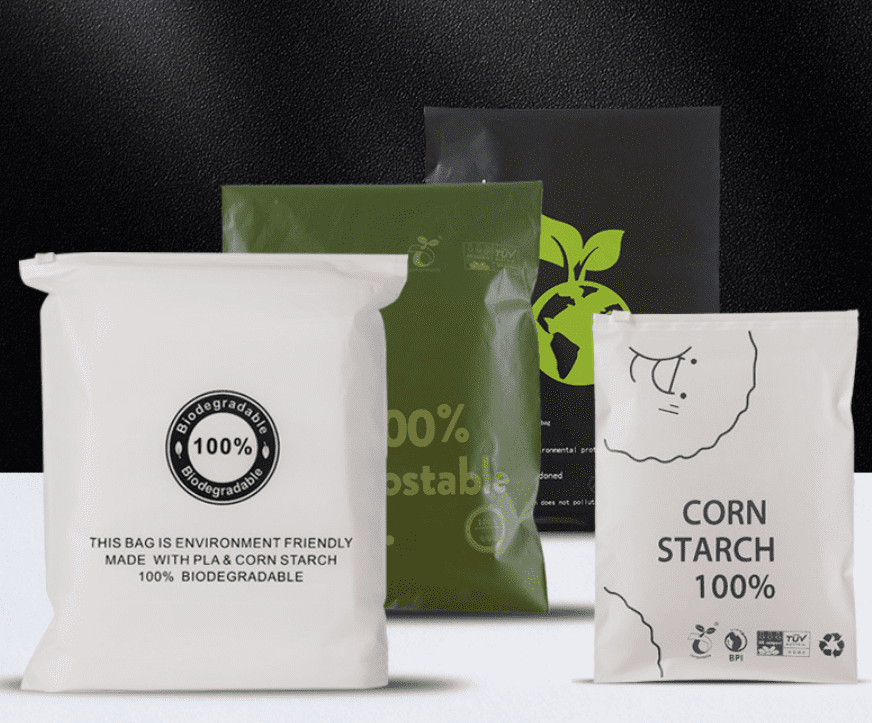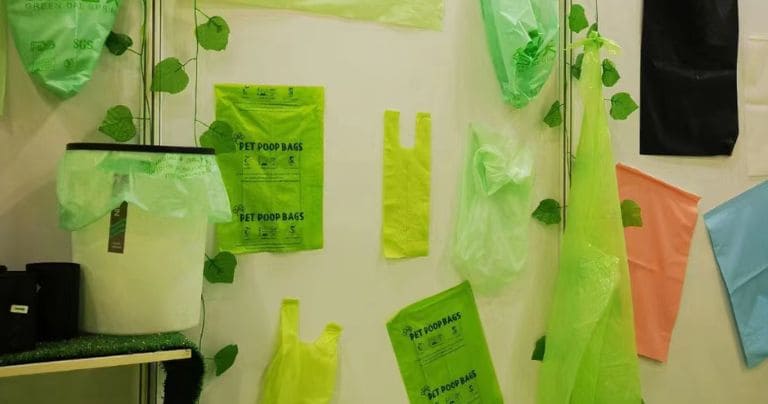Table of Contents
Welcome to the future of hand safety! In a world where sustainability is a top priority, traditional disposable gloves are being replaced by a more environmentally friendly option: compostable gloves. These innovative gloves are not only effective in protecting your hands, but they also help protect the planet.
Compostable gloves are made from plant-based materials, such as cornstarch and cellulose, making them biodegradable and compostable. Once disposed of, they break down naturally without leaving behind harmful pollutants. This means that every time you use compostable gloves, you are making a positive impact on the environment. Not only are compostable gloves a sustainable choice, but they also offer the same level of performance as traditional gloves. Whether you’re working in the food industry, healthcare, or any other field that requires hand protection, compostable gloves provide the safety and durability you need.
By choosing compostable gloves, you’re not only safeguarding your hands but also contributing to a healthier and more sustainable future. Let’s delve into the various facets of this groundbreaking product.
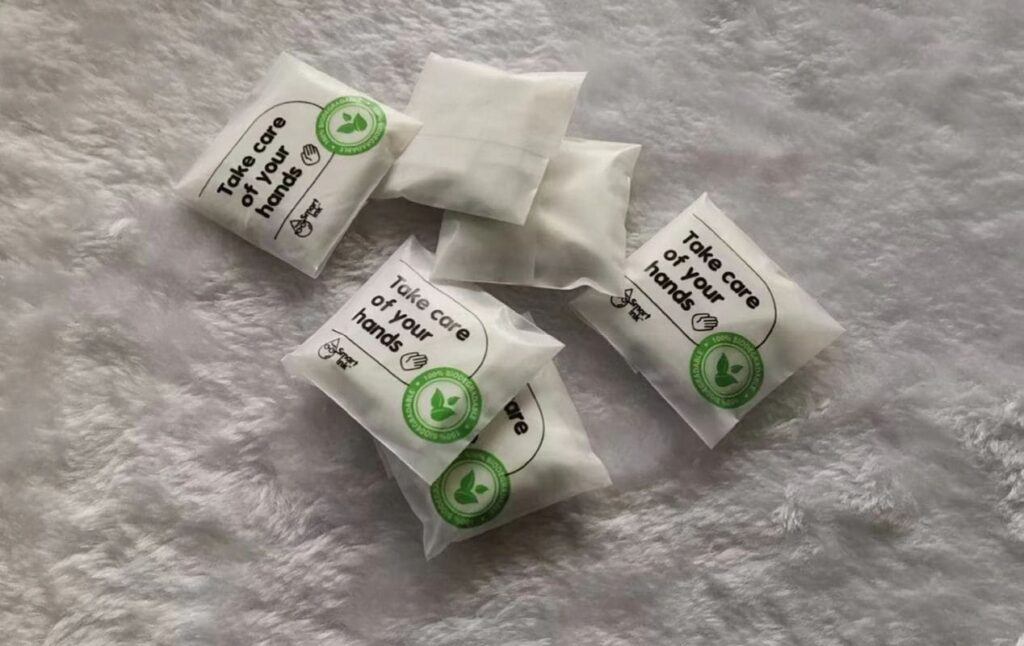
Why is Hand Safety Crucial in Various Industries?
Hand safety is an aspect of workplace health and safety that cannot be overlooked, regardless of the industry. As a professional who has closely observed various industrial environments, I’ve recognized that hands are among the most used and, consequently, most vulnerable parts of the body in a work setting. This vulnerability makes it imperative to prioritize hand safety across all industries.
High Risk of Hand Injuries
The hands are constantly exposed to potential hazards, ranging from cuts and abrasions to chemical burns and punctures.
Diverse Nature of Hand Injuries
In industries such as manufacturing, construction, or healthcare, workers are regularly exposed to sharp objects, heavy machinery, and hazardous substances. Each of these elements poses unique risks, from superficial injuries to more severe, long-term damage.
Impact on Workers’ Wellbeing and Productivity
Injuries to the hands not only affect the individual’s health and wellbeing but also have broader implications for productivity and efficiency. Hand injuries can lead to significant downtime, impacting overall operational efficacy.

Compliance with Health and Safety Regulations
Maintaining hand safety is not just a matter of best practice but also of legal compliance.
Regulatory Requirements
Various industries are governed by strict regulations that mandate the use of appropriate hand protection. Non-compliance can result in legal repercussions and potential harm to the company’s reputation.
Ensuring Worker Safety and Confidence
Compliance with these regulations ensures a safe working environment, which in turn boosts workers’ confidence and morale. A workforce that feels safe is more likely to be productive and committed.
The Role of Hand Protection in Preventing Contamination
In certain industries, hand safety also involves preventing contamination.
Critical in Healthcare and Food Industries
In healthcare, for example, protecting hands is crucial to prevent the spread of infections. Similarly, in the food industry, hand safety directly correlates to food safety and hygiene, impacting public health.
Use of Appropriate Gloves
The use of appropriate gloves, whether for protection against contaminants or injuries, is a critical element in maintaining hand safety. This not only protects the workers but also the end consumers and the general public.
The importance of hand safety in various industries cannot be overstated. Whether it’s to prevent physical injuries, comply with health and safety regulations, or avoid contamination, ensuring the safety of workers’ hands is integral to maintaining a healthy, productive, and legally compliant workplace.
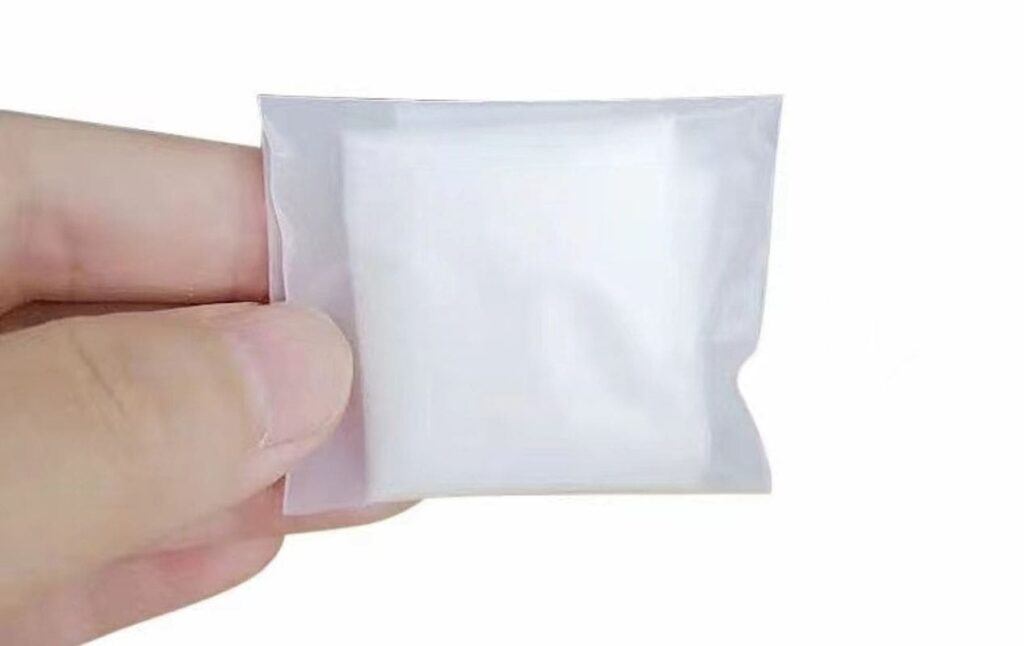
How Do Traditional Disposable Gloves Impact the Environment?
In the context of an increasingly eco-conscious world, the environmental impact of traditional disposable gloves is a topic of considerable importance. Having spent years in the field of sustainable product development, I have seen the significant effects that these seemingly small items can have on our environment. Traditional disposable gloves, commonly used across various industries, pose several environmental challenges.
Contribution to Non-Biodegradable Waste
The most prominent issue with traditional disposable gloves is their contribution to non-biodegradable waste.
Persistence in Landfills
Made from materials like latex, nitrile, or vinyl, these gloves do not break down easily and can persist in landfills for decades. As these gloves are used in vast quantities daily, they accumulate to create substantial environmental burdens.
Impact on Wildlife and Ecosystems
Discarded gloves can find their way into natural habitats, posing threats to wildlife. Animals can ingest these materials, leading to health issues or death, and discarded gloves can disrupt delicate ecosystems.
Carbon Footprint of Glove Production
The environmental impact of traditional disposable gloves also extends to their production process.
Resource-Intensive Manufacturing
The manufacturing of disposable gloves is resource-intensive, involving the use of chemicals, water, and energy. The production process contributes to carbon emissions and resource depletion, further exacerbating environmental concerns.
Transportation and Distribution
Additionally, the transportation of these gloves from manufacturers to distributors and then to end-users involves significant energy use and associated emissions, adding to their overall carbon footprint.

Issues in Recycling and Disposal
Recycling and safe disposal of traditional disposable gloves present their own set of challenges.
Difficulties in Recycling
Due to their material composition and potential contamination, especially in medical or chemical handling uses, disposable gloves are challenging to recycle. This difficulty leads to them being predominantly disposed of in landfills or incinerated.
Incineration and Pollution
Incineration of these gloves can release harmful chemicals into the atmosphere, contributing to air pollution and the greenhouse effect.
The environmental impact of traditional disposable gloves is multi-faceted, encompassing issues like non-biodegradable waste, resource-intensive manufacturing, and challenges in recycling. As the world shifts towards more sustainable practices, it becomes increasingly important to reconsider the use of such products and explore eco-friendlier alternatives that mitigate these environmental concerns.
What is the Science Behind Compostable Gloves?
The science behind compostable gloves is a fascinating and crucial aspect of their appeal, particularly in the current context of environmental sustainability. As an expert in sustainable materials and product development, I’ve closely followed the evolution of compostable gloves. These gloves represent a significant advancement over traditional disposable gloves, offering a solution that aligns with ecological principles without compromising on functionality.
Understanding Compostable Materials
The core of compostable gloves lies in their material composition.
Plant-Based Polymers
Compostable gloves are primarily made from plant-based polymers such as polylactic acid (PLA), which is derived from renewable resources like corn starch or sugarcane. PLA has properties similar to conventional plastics but with the crucial difference of being biodegradable.
The Biodegradation Process
When disposed of in the right conditions, such as an industrial composting facility, these gloves break down into natural compounds like water, carbon dioxide, and biomass. This process is facilitated by microorganisms in the composting environment, which consume and decompose the plant-based materials.

Advancements in Material Science
The development of compostable gloves is a testament to advancements in material science.
Enhancing Durability and Flexibility
One of the challenges has been to create plant-based materials that are not only compostable but also match the durability and flexibility of traditional synthetic materials. Recent innovations have led to compostable materials that are strong enough to withstand rigorous use while still being able to break down effectively in a compost environment.
Balancing Biodegradability with Functionality
Scientists are constantly working to balance the rate of biodegradation with the functional lifespan of the gloves. The goal is to ensure that the gloves remain intact during their period of use but break down efficiently once composted.
Environmental Impact Considerations
The science behind compostable gloves also involves considering their overall environmental impact.
Life Cycle Analysis
Life cycle analysis of these gloves takes into account factors such as the energy used in production, the impact of sourcing plant-based materials, and the efficiency of the composting process. This comprehensive approach ensures that the gloves are truly eco-friendly at every stage of their life cycle.
Reducing Carbon Footprint
By using renewable resources and reducing reliance on fossil fuels, compostable gloves contribute to a lower carbon footprint compared to traditional disposable gloves. This makes them a more sustainable choice for a range of applications.
The science behind compostable gloves is a blend of innovative material development, environmental science, and practical application. It represents a growing commitment to finding solutions that safeguard both human health and the environment, marking a significant step forward in the development of sustainable protective gear.
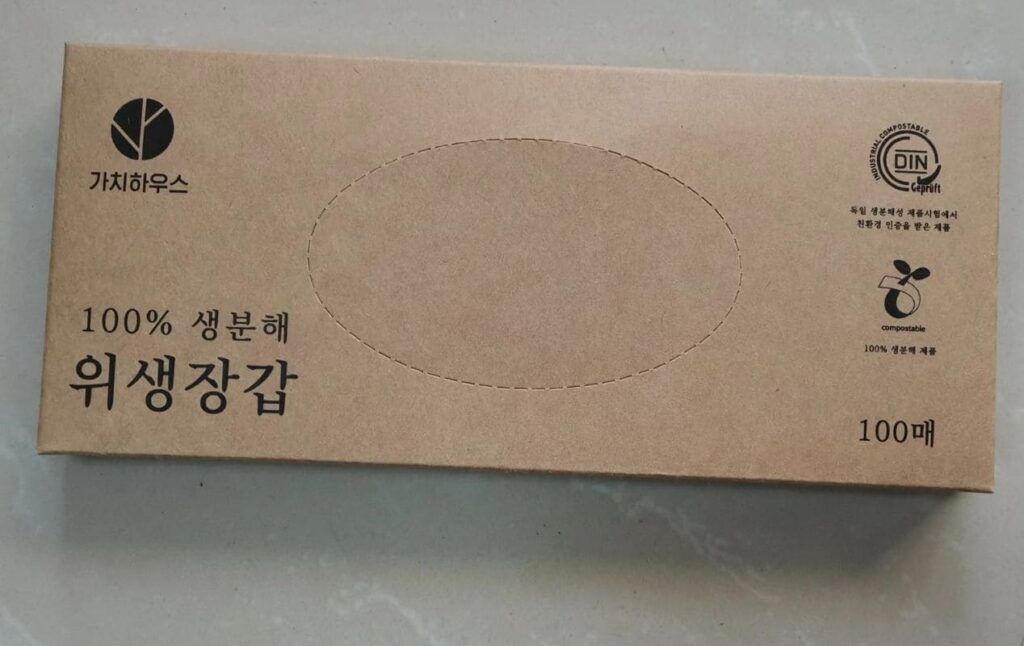
How Are Companies Adopting Compostable Gloves in Their Operations?
The adoption of compostable gloves by companies across various industries marks a significant shift towards sustainability and environmental responsibility. As an observer and participant in this evolving landscape, I’ve noted a growing trend of businesses integrating compostable gloves into their operations. This transition is not just a nod to eco-friendliness but also a strategic move that aligns with corporate social responsibility goals and public demand for greener practices.
Case Studies of Successful Implementation
Real-world examples offer insight into how companies are effectively incorporating compostable gloves.
Healthcare and Food Service Industries Leading the Way
In the healthcare and food service industries, where glove use is high, the switch to compostable options has a noticeable impact. Hospitals, clinics, and restaurants are adopting these gloves to reduce their plastic waste and demonstrate a commitment to environmental stewardship.
Manufacturing and Laboratories
<
Manufacturers and research labs are also beginning to use compostable gloves, especially those who focus on green products or have sustainability at their core business ethos. By using compostable gloves, they are reducing their ecological footprint while maintaining safety standards.
Overcoming Challenges in Adoption
Switching to compostable gloves involves overcoming certain challenges, which companies are addressing in innovative ways.
Cost Considerations
Initially, compostable gloves may come at a higher cost compared to traditional gloves. However, companies are finding that the long-term benefits and alignment with sustainability goals outweigh the initial investment. Some are absorbing the extra cost, while others pass it on as a value-added aspect of their green products or services.
Employee Training and Awareness
Educating employees about the proper use and disposal of compostable gloves is crucial. Companies are investing in training programs to ensure that these gloves are used effectively and disposed of correctly to achieve their environmental benefits.
Integration into Corporate Sustainability Goals
Adopting compostable gloves aligns with broader corporate sustainability goals.
Enhancing Brand Image
Companies are leveraging the use of compostable gloves as part of their green initiatives. This not only reduces their environmental impact but also enhances their brand image and appeal to environmentally conscious consumers.
Meeting Regulatory and Environmental Standards
With increasing regulatory focus on sustainability, companies using compostable gloves are better positioned to meet these standards and showcase their commitment to environmental responsibility.
The adoption of compostable gloves in various industries is a testament to the growing emphasis on sustainability in the business world. Companies are embracing these eco-friendly alternatives not just to comply with environmental standards but as part of a larger commitment to responsible corporate citizenship and ecological conservation.
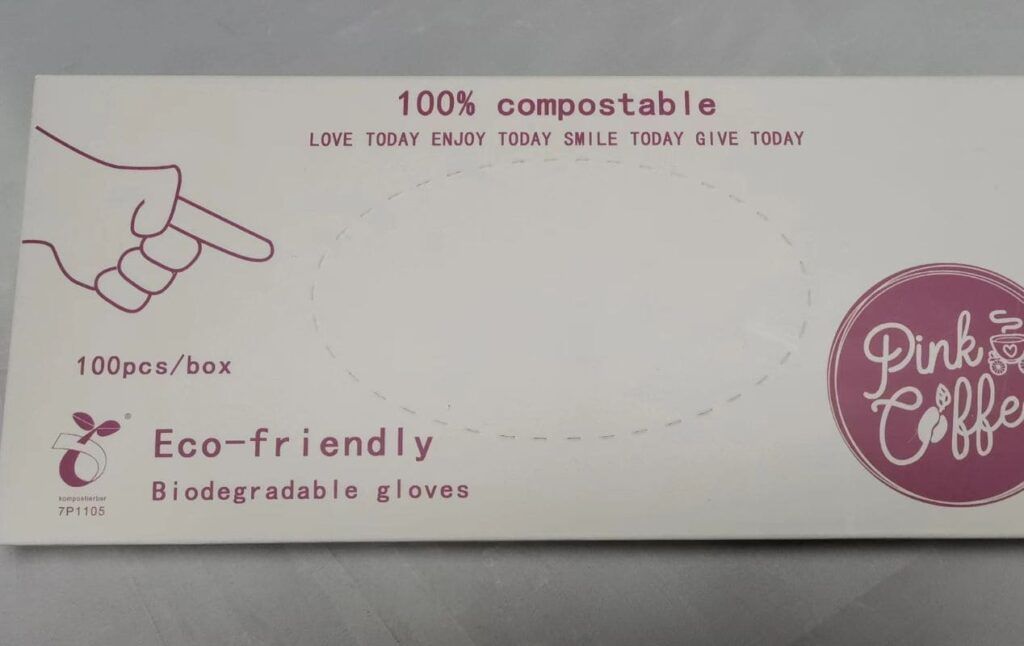
How Do Compostable Gloves Compare to Traditional Disposable Gloves?
In the discourse around sustainable alternatives in protective wear, the comparison between compostable and traditional disposable gloves is pivotal. As a professional deeply involved in the promotion of eco-friendly products, I have seen a growing interest in understanding how compostable gloves stack up against their traditional counterparts. This comparison covers various aspects, from environmental impact to performance and cost-effectiveness.
Environmental Impact
The most significant difference lies in the environmental footprint of each type of glove.
Biodegradability and Waste Reduction
Compostable gloves are designed to break down in a composting environment, significantly reducing waste accumulation. Traditional disposable gloves, typically made from materials like latex or nitrile, can take decades to decompose, contributing to landfill overflow and environmental pollution.
Resource Utilization
The production of compostable gloves often involves more sustainable use of resources. They are typically made from renewable materials like cornstarch, contrasting with the petroleum-based raw materials used in traditional gloves.
Performance and Durability
Assessing the performance of these gloves is crucial for industries that rely on them for safety.
Strength and Flexibility
Early versions of compostable gloves faced challenges in matching the strength and flexibility of traditional gloves. However, advancements in materials science have significantly improved their quality, making them comparable in performance to regular disposable gloves.
Suitability for Various Applications
While compostable gloves are now robust enough for many applications, there are still some scenarios where traditional gloves might be preferred, especially where extremely high durability or specific chemical resistances are required.
Cost Considerations
The cost is a key factor in decision-making for businesses and consumers.
Initial Cost
Traditionally, compostable gloves have been more expensive than their disposable counterparts, reflecting the higher cost of sustainable materials and production processes.
Long-Term Cost-Benefit Analysis
However, when considering the long-term environmental and societal costs of plastic waste, compostable gloves can be seen as a cost-effective choice. Businesses are increasingly factoring in these broader implications in their purchasing decisions.
User Experience
The comfort and user experience provided by gloves are important for their adoption.
Comfort and Allergenic Properties
Compostable gloves have been developed to offer comfort similar to traditional gloves. They also address allergenic issues associated with latex gloves, offering a hypoallergenic alternative.
Public Perception and Acceptance
With growing environmental awareness, compostable gloves are gaining acceptance and even preference among users who are conscious of their ecological impact.
In comparing compostable gloves to traditional disposable gloves, it’s evident that while each has its strengths, compostable gloves are emerging as a strong contender, especially in the context of environmental sustainability. Their evolving performance, combined with the growing prioritization of eco-friendly practices, positions them as a viable and responsible choice for the future.
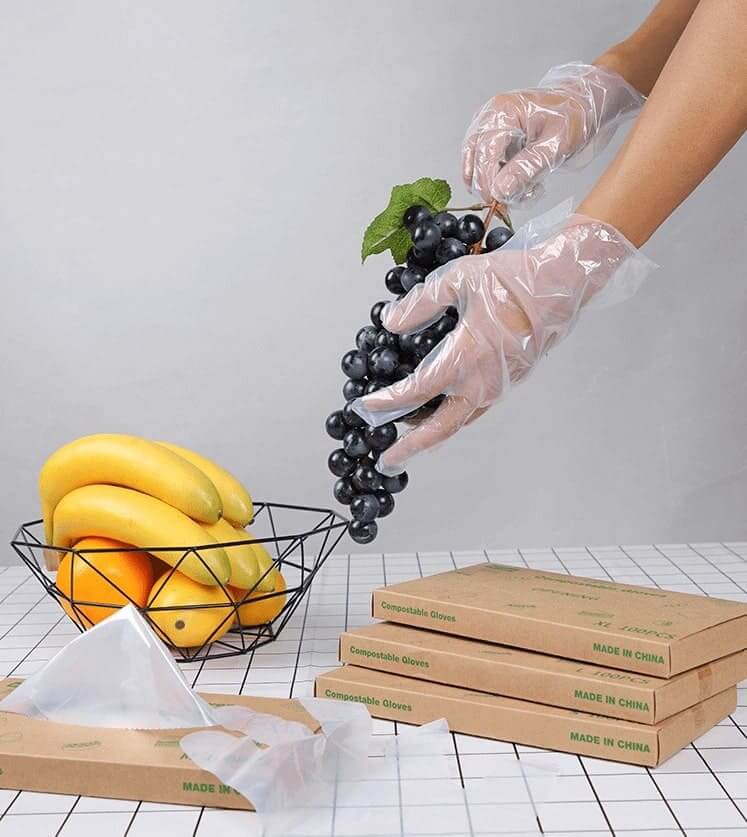
What Should You Consider When Choosing Compostable Gloves?
Selecting the right compostable gloves is a decision that extends beyond just finding an eco-friendly option. It involves considering various factors to ensure that the gloves meet both your specific needs and broader sustainability goals. As an expert in sustainable product selection, I’ve guided numerous clients through this process, emphasizing that the right choice hinges on a balance of functionality, environmental impact, and user requirements.
Assessing the Material Quality and Durability
The composition and durability of compostable gloves are primary considerations.
Material Composition
Understanding the materials used in compostable gloves is crucial. Look for gloves made from high-quality, plant-based polymers like PLA, which offer comparable strength and flexibility to traditional plastics.
Durability for Intended Use
Consider the nature of the tasks the gloves will be used for. Ensure that the gloves are durable enough to withstand the specific demands of your work environment, whether it’s healthcare, food service, or another industry.
Compostability Standards and Certifications
The compostability of the gloves is a key aspect of their environmental friendliness.
Certification Standards
Look for gloves that are certified compostable by recognized standards such as ASTM D6400 or EN 13432. These certifications ensure that the gloves will biodegrade effectively in a commercial composting facility.
Understanding the Composting Process
Be aware of the composting process required for the gloves. Some compostable gloves may need specific conditions to break down effectively, which might not be available in all regions.
User Comfort and Safety
The comfort and safety of the gloves for the wearer are paramount.
Allergenic Properties
If allergies are a concern, especially in the case of latex sensitivity, ensure that the compostable gloves are hypoallergenic. This aspect is crucial in environments like healthcare or food handling, where skin sensitivity can be a significant issue.
Fit and Comfort
The fit and comfort of the gloves impact user compliance. Choose gloves that are ergonomically designed to provide comfort during extended use, ensuring that they do not compromise dexterity or tactile sensitivity.
Environmental Impact and Sustainability Goals
Aligning the choice of gloves with your or your organization’s sustainability goals is important.
Life Cycle Analysis
Consider the environmental impact of the gloves throughout their life cycle, from production to disposal. Ensure that the gloves align with your broader environmental and sustainability objectives
Supporting Sustainable Practices
By choosing compostable gloves, you are supporting sustainable practices in the industry, which can have a ripple effect, encouraging more eco-friendly innovations and choices.
Choosing the right compostable gloves involves a thorough evaluation of material quality, compostability standards, user comfort, and alignment with sustainability goals. By carefully considering these factors, you can select gloves that not only protect your hands but also contribute positively to the environment.

What is the Future of Compostable Gloves and Sustainable Hand Safety Solutions?
The future of compostable gloves and sustainable hand safety solutions is an area ripe with potential and innovation. As an advocate for environmental sustainability and a keen observer of trends in protective gear, I foresee a transformative shift in how businesses and consumers approach hand safety, with compostable gloves playing a leading role. This shift is driven by technological advancements, growing environmental awareness, and evolving regulatory landscapes.
Technological Innovations in Material Science
The future will likely see significant advancements in the materials used for compostable gloves.
Next-Generation Biopolymers
Research in biopolymers is continuously evolving, promising materials with enhanced properties such as greater durability, flexibility, and even improved compostability. These developments could address current limitations and expand the applications of compostable gloves.
Integration of Functional Additives
Future compostable gloves might include functional additives, like antimicrobial agents or enhanced grip features, broadening their appeal and usability in various industries.
Growing Demand for Eco-Friendly Products
Consumer and corporate demand for sustainable products will fuel the growth of the compostable glove market.
Shift in Consumer Preferences
As awareness of environmental issues grows, so does the demand for products that align with these values. Consumers are increasingly seeking out eco-friendly alternatives, and businesses are responding to this shift.
Corporate Sustainability Goals
Companies across various sectors are setting ambitious sustainability goals. The adoption of compostable gloves is a tangible action that contributes to these objectives, enhancing corporate environmental stewardship.

Regulatory Influences and Policy Shifts
Government policies and regulations will play a crucial role in the widespread adoption of compostable gloves.
Stricter Environmental Regulations
As governments impose stricter regulations on plastic waste and promote sustainable practices, compostable gloves will become a more attractive option for compliance.
Incentives for Sustainable Practices
Potential incentives for using environmentally friendly products could further encourage companies and consumers to choose compostable gloves.
Expansion in Compost Infrastructure
For compostable gloves to realize their full potential, improvements in composting infrastructure are essential.
Enhancing Composting Facilities
Increased investment in commercial composting facilities would allow for more effective and efficient breakdown of compostable gloves, making them a more practical option.
Public Awareness Campaigns
Educational campaigns about composting could increase participation rates and proper disposal practices, ensuring that compostable gloves are disposed of in a way that maximizes their environmental benefits.
The future of compostable gloves and sustainable hand safety solutions is promising and dynamic. Driven by advancements in material science, changing consumer attitudes, regulatory shifts, and improvements in compost infrastructure, this future represents a more sustainable approach to hand protection, aligning hand safety with environmental responsibility.

Conclusion
The shift towards compostable gloves is a major step in harmonizing safety with sustainability. These gloves are more than protective gear; they’re a commitment to our planet’s health. As technology and eco-awareness progress, they’re set to become a standard in industries, symbolizing a future where safety and environmental care go hand in hand.




